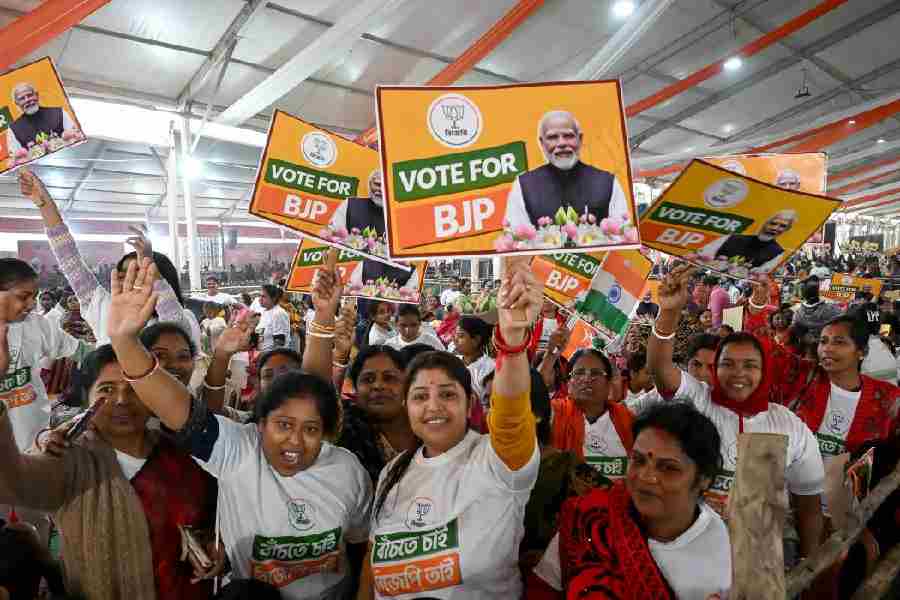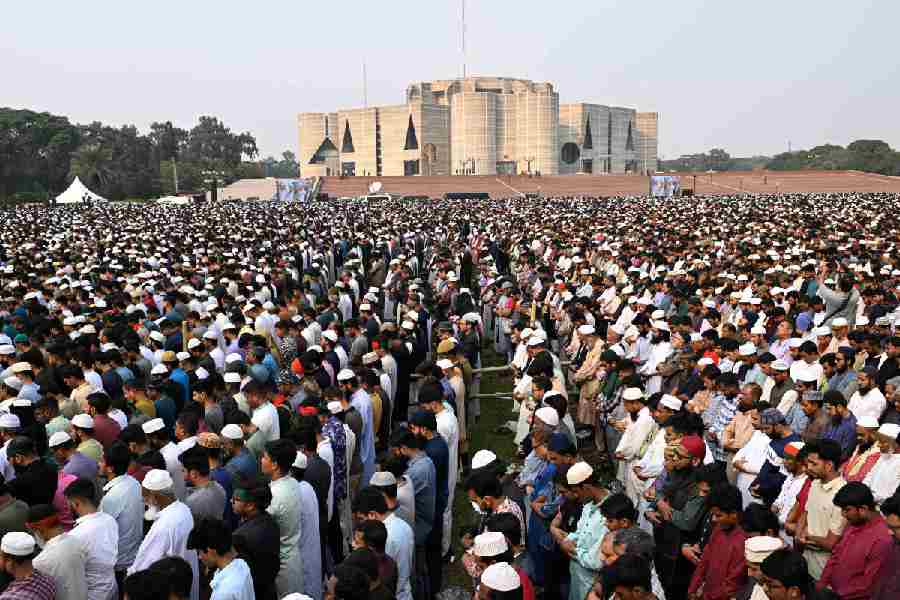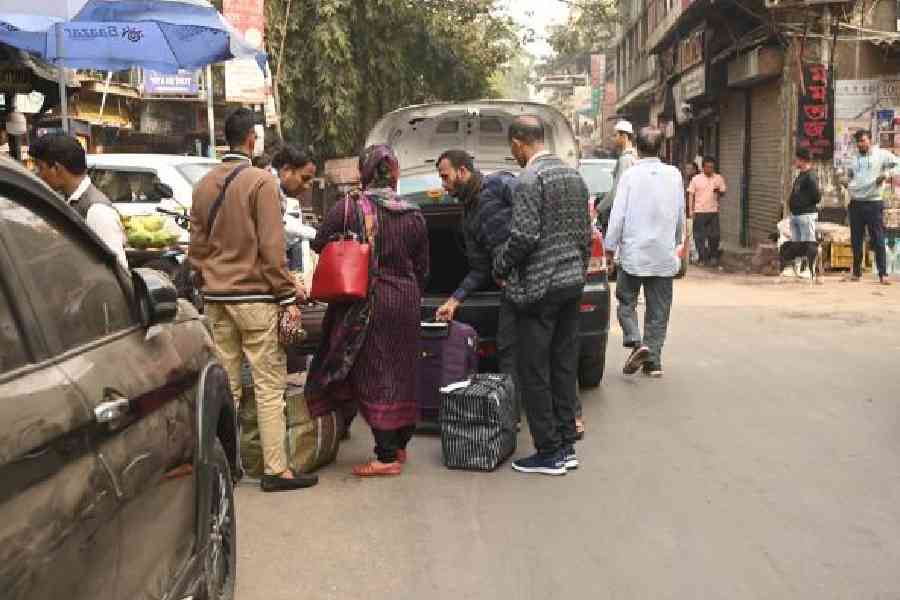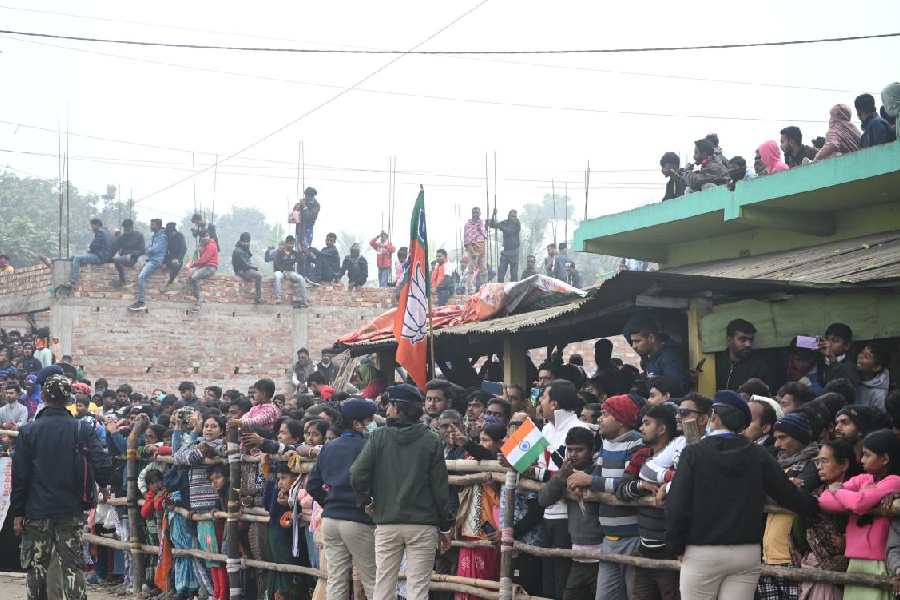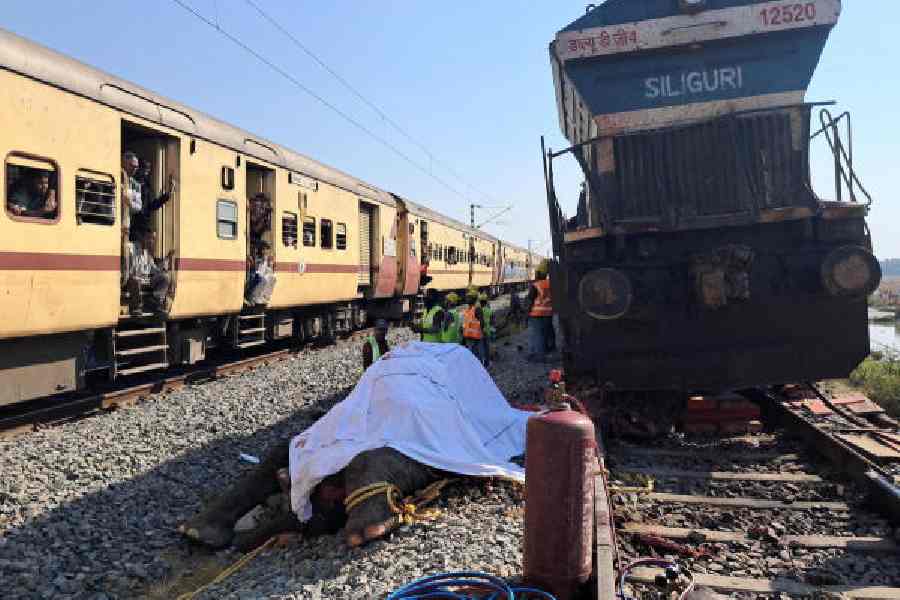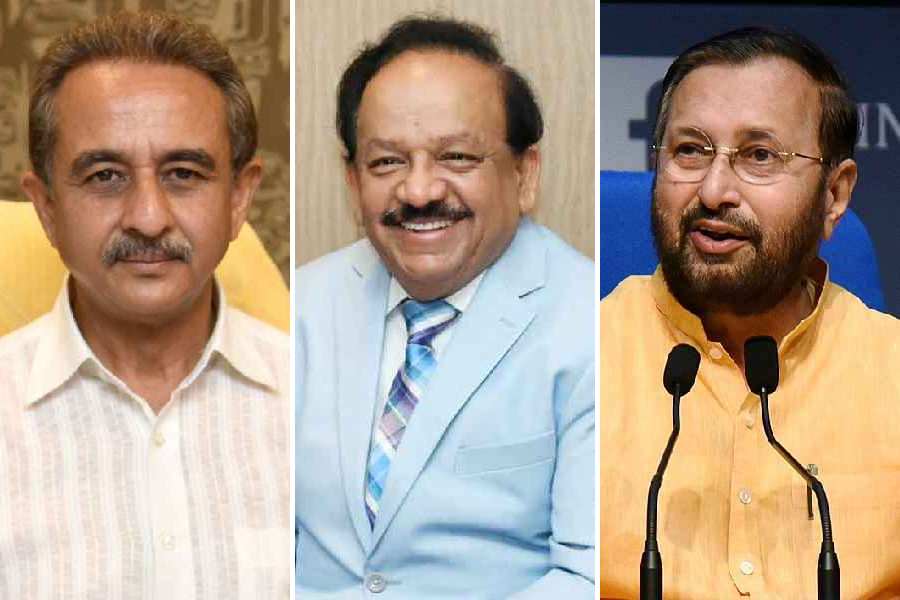
Grand Alliance supporters celebrate outside Lalu Prasad's residence in Patna on Sunday. Picture by Deepak Kumar
The words of Nagendra Chaudhri, Pancham Rajbangshi, Avdesh Prasad - tongawallahs in Rajgir - were ringing in my ears on Sunday morning as the Bihar Assembly poll result trends started throwing up a clear edge for the Grand Alliance after the first few hours during which the BJP seemed to have an advantage.
Sitting in Calcutta, I could also visualise that the teenaged girls whom I had met at Rajkiya Krit High School at Chandpura in Hajipur were all smiles after the poll results though none of them had achieved the age of voting.
During my visit to Bihar in the second and third weeks of October to cover the polls, I had met the three men near the sprawling convention centre that the Nitish Kumar government has built in Rajgir.
As my intention was to gauge the mood in Bihar, the discussions revolved around the polls and prospects of the BJP-led NDA and the JDU-RJD-Congress combine. The three middle-aged men, all school dropouts and belonging to the Mahadalit community, had unequivocally told me that they saw no chance of the BJP winning the elections though Jitan Ram Manjhi, one of the most prominent leaders from the community, was an NDA alliance partner.
Conventional knowledge about caste-driven Bihar polls had led me to believe that people belonging to Manjhi's community would vote for the alliance he was supporting. I kept asking probing questions on their loyalty.
' BJP bade logon ki party hai... Unhe garib ke vote nahi milenge. Nitish-ji ki sarkar banegi (BJP is a rich man's party... They won't get the votes of the poor. Nitish will form the next government),' Nagendra had said and his friends had nodded in agreement.
During the 45-minute discussion on a sultry afternoon, the men first tried to convince me that caste-led voting had become a thing of the past in the state before explaining the reasons behind their apathy towards the BJP-led alliance. From rising prices during the Modi regime to the big cars seen in BJP rallies - they listed several factors to convince me that the BJP was indeed a rich man's party, which didn't care about the poor.
As I stopped at various roadside tea stalls or dhabas or the chowrahas in various parts of rural Bihar over the next few days, I heard the same argument against the BJP and it was clear that the Nitish-led alliance had managed to brand the BJP as a rich man's party.
And the likes of Shikha Kumari, Sunidhi Kumari and Aditi, all students of Class IX at the Hajipur school, had told me they could carry on with their studies - something their mothers couldn't - only because of 'mukkhyamantri-ji Nitish Kumar', who had given them money to buy bicycles, school uniforms and books.
All the girls told me their mothers were happy they were studying. During a brief chat with a shy young woman, recently recruited as a constable, who was trying her best to show toughness befitting a cop, in Patna on whom she would vote for, she thanked Nitish-ji for giving women like her 'strength' by allowing them to wear 'this uniform'.
It was clear to me that the battle was between a party perceived as a rich man's party and an alliance that was trying to empower women, by giving them bicycles, by making them permanent teachers in schools and even recruiting them as constables.
The battle seemed uneven, but the BJP leaders - sitting in air-conditioned offices in Patna - were confident that the dialectics in the Grand Alliance over traditional differences between castes would be enough to see them through. Over and above, they had the unflinching support of the upper castes and appeal of brand Modi, which was enough to decimate Nitish and Lalu.
But during my trips I found out that the Nitish-Lalu combine had even the poorer sections of the so-called upper caste by their side.
Take this example. The owner of a sweetmeat shop in Danapur, a baniya, was explaining to me with care that though Nitish did a good job as the chief minister, he would vote for the BJP as he feared return of jungle raj because of Lalu Prasad's presence in the alliance. It was clear that he was a loyal BJP supporter.
But two young men, who had come in a motorbike and were standing at a distance, joined the discussion without even being invited.
'We will vote for Nitishji... He is with the poor,' asserted the young man, who later introduced himself as a Bhumihar, the land owning class that the BJP has always regarded as a core constituency.
'The BJP leaders are visible only in big cars,' he had added.
With the school teacher, who sported a handle-bar moustache, echoing what the tangawallhs had told me in Rajgir, my hypothesis that the class taking over the caste consideration got another confirmation. The more visits I made to the rural areas and more I talked to people, this hypothesis received more confirmations.
One swallow doesn't make a summer and so it is premature to conclude on the basis of such dip-sticks that class concerns of the poor are getting more important than the caste considerations. Similarly, it will also be naive to conclude that class consciousness alone helped the Nitish-Lalu combine get such an overwhelming victory.
But there is little doubt that the rich man's party tag cost the BJP dear and the party has to go in for a serious rethink on how to project itself ahead of the next phase of state elections early next year.
During my preparations before going to Bihar to cover the polls, I spoke to analysts with financial institutions - who were tracking the polls with keen interest because of its impact on national politics - and all of them told me that the BJP clearly had an edge. The factors they referred to ranged from the party's administrative and financial might as the party in power at the Centre.
The BJP's superiority in terms of availability of resources was visible since the moment I landed at Patna airport, where the party's national leaders were landing almost everyday. The giant billboards - with the faces of Modi and Amit Shah - all across Patna made it clear that the strategists had zeroed in on a blitzkrieg to ensure top-of-the-mind recall of the voters. The traffic snarls outside the BJP's office and the row of brand new SUVs parked all around confirmed that the BJP was all over.
On Day One of my Bihar trip, I also got a sense that the BJP had an edge - somewhat similar to what a few television channels got on Sunday morning when the results had started coming in.
But the more I visited rural belts of Bihar - 90 per cent of Bihar population lives outside urban centres - there was a realisation that Nitish and Lalu, both disciples of Jayaprakash Narayan, managed a class-centric awakening, which raked in unprecedented dividends for the duo. The fact that Nitish gave a sense of empowerment to women added to the zing and completed the rout.


